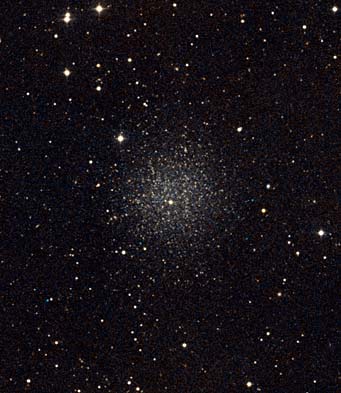
Some dwarf galaxies are much brighter and richer in ordinary matter than others. Leo II, discovered in 1950, is in range of amateur sky imagers.
Digitized Sky Survey / Sean Walker
Scientists announced this morning (press release) that they have apparently solved a major cosmic puzzle: the discrepancy between the number of small, faint galaxies predicted to exist near the Milky Way and the number actually seen.
By data-mining the Sloan Digital Sky Survey, and then following up with the Keck Observatory in Hawaii, the astronomers have identified many extremely dim, dark-matter-dominated dwarf galaxies in the Milky Way's immediate neighborhood. This is a major step toward resolving the "missing dwarf galaxy" problem — the last important puzzle-piece that was lacking from the picture of the how the entire universe took form during and after the Big Bang.
Cosmology theory predicts that, if the inflationary-universe version of the Big Bang's earliest instant is correct, a large galaxy like the Milky Way should end up with a couple hundred dwarf-galaxy satellites. But only a dozen or so were known. Now it's clear that most or all of the missing galaxies do indeed exist, but they were overlooked because they are made of 99% dark matter and relatively few stars.
The full story of today's announcement and its significance is in the October issue of Sky & Telescope, on sale now.
 0
0
Comments
You must be logged in to post a comment.